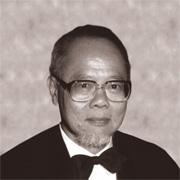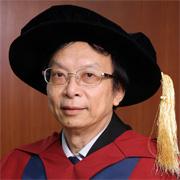
中文
In 2005, the University celebrated the inauguration of the first 8 Endowed Professorships,
a milestone in the University's history.
To date, a total of 120 Endowed Professorships have been established.
a milestone in the University's history.
To date, a total of 120 Endowed Professorships have been established.

 |
Chan To-Haan Professorship in Urban Planning and Design Always mindful of our uncle’s saying: ‘get the best out of people and make full use of things’ (人盡其才;物盡其用), we consider it most appropriate to make a donation to his alma mater in the discipline that shaped and defined his being and, at the same time, make a contribution to the advancement of knowledge and, hopefully, humanity at large.
The Nieces and Nephews of the late Mr Chan To-Haan |
 |
Anthony G O YehAppointed in 2016 In 1800, only three percent of the global population inhabited urban areas. According to the United Nations, that figure jumped to 54 percent by 2014. With 66 percent of the world’s population forecast to be living in metropolitan areas by 2050, urban planners and academics are looking at new ways to plan and design smart sustainable cities to cater for this mass migration. Professor Anthony Yeh Gar-On is the Chair Professor of the Department of Urban Planning and Design, Faculty of Architecture, The University of Hong Kong (HKU). For more than 40 years he has been studying land use and reforms in China, and is a pioneer in the research and development of geographic information systems (GIS) as planning support systems. He is also an expert in the analysis of urban development in Mainland China after the 1978 economic reforms and is the first researcher to integrate case-based reasoning with GIS in urban planning. Professor Yeh’s major research includes new town development in Hong Kong, land development and urban spatial structure in China, detection and monitoring of land use change, and illegal land use in peri-urban areas with radar satellite remote sensing. His work also covers high-density living, smart transport, and producer services development in China during economic transition. In his GIS research in urban and regional planning, he has developed advanced remote sensing methods and models for the monitoring, evaluation, and modelling of rapid urban development and agricultural land loss in the Pearl River Delta. He has developed a family of constrained cellular automata (CA) urban planning models that can be used to generate different planning options according to different environmental considerations, urban forms and densities for the evaluation of urban development and the planning for sustainable development. He joined HKU in 1981 after finishing his PhD at Syracuse University in the US. He has been Dean of the Graduate School, Director of the Centre of Urban Studies and Urban Planning and Institute of Transport Studies, and Head of the Department of Urban Planning and Design. In addition to the numerous prizes, awards and honorary positions that he has received, he was awarded the Hong Kong Croucher Foundation Senior Research Fellowships Award in 2001, the UN-HABITAT Lecture Award in 2008 for his outstanding and sustained contributions to research, thinking and practice in the human settlements field, and the Dr Gill-Chin Lim Global Award in 2012 for his global commitment and leadership as a scholar and an educator in the field of humanistic globalisation. Professor Yeh is an Academician of the Chinese Academy of Sciences and the Academy of Social Sciences, UK, and Fellow of The Academy of Sciences for the Developing World, Hong Kong Institute of Planners, Royal Town Planning Institute, Planning Institute of Australia, Chartered Institute of Logistics and Transport and Royal Institution of Chartered Surveyors, and is the Director of GIS Research Centre at HKU. His papers are highly cited in both the field of urban modelling and GIS, and urban development and planning in Hong Kong and China. He has just received HKU’s Distinguished Research Achievement Award, the highest honour and award for excellence in research which is bestowed by HKU to its staff once every two to four years. |